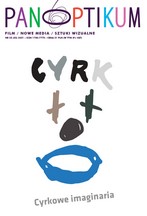Ciało jako afektywny wymiar poznania na przykładzie Taksydermii Györgya Pálfiego
The body as an affective dimension of cognition. Case for Gyorg Palfie’s Taxidermia
Author(s): Anna TarkowskaSubject(s): 19th Century Philosophy, Film / Cinema / Cinematography
Published by: Uniwersytet Gdański
Keywords: Taxidermy; affect; Nietzsche; Corpus; body;
Summary/Abstract: The analysis of the film Taxidermy shows the dominant role of affect, both in the case of the perception of the work and on the level of perceiving the subject’s identity as processually shaped by the individual. The meeting of the body with the body can be compared to an “event”, “touching” the body of the Other, “I” – exists in what is in between. The process of mediation and affectivization is inscribed precisely in the matter of corporeality. Affect is considered based on the definitions of G. Deleuze, F. Guattari and B. Massumi. The embodied experience is accompanied by a gesture of “going beyond” the boundaries of subjectivity that have so far been inviolable. The author shows the course of the deconstruction of subjectivity. Affect is presented in the article as a “potentiality” that exists in the body, which affects both others and remains open to the influence of the Other. The concept of the body as defined by M. Merleau Ponty and J.L. Nancy allowed us to penetrate deep into the actions of the characters, whose corporeality can be treated as an element of active activity in the outside world.
Journal: Panoptikum
- Issue Year: 2021
- Issue No: 25 (32)
- Page Range: 137-153
- Page Count: 17
- Language: Polish

